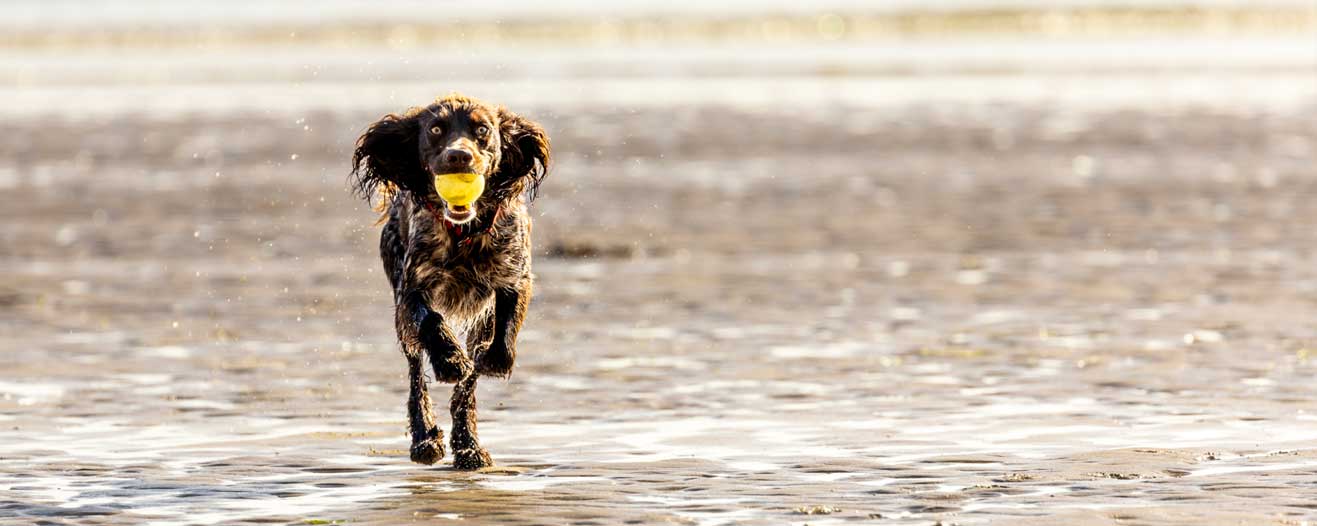- Find a Pet
- Advice and Welfare
- Ways to Give
- Get Involved
- What We Do
- Search
- My RSPCA
- Report a concern
- Sponsor
-
Colour modeVivid Calm
- Home
- Advice and welfare
- Seasonal advice
- Summer
- Dog care in summer
Caring for your dog in hot weather
Dogs lose heat through panting, can only sweat through their paws, and are at high risk of getting heatstroke. Follow our top tips to keep your dog cool in the heat.

Tips for keeping your dog cool in summer
Provide shade and water
- provide constant access to shaded areas inside and out
- make sure there is always clean, cold water available
Walkies
- go out in the early morning or late evening when it’s cooler
- don’t run or cycle with your dog when it’s hot
- if you're planning a day out with your dog, check before leaving home whether dogs are allowed. If they're not, arrange a pet-sitter or choose a dog-friendly attraction to avoid leaving them in the car or tied up in the heat
- pavements can get very hot! You know the saying, "it's hot enough to fry an egg!" Imagine what that does to your poor dogs' feet! If the ground is too hot to touch with your hand for five seconds, it’s too hot for paws! Also look out for:
- limping or refusing to walk
- licking or chewing at their feet
- pads darker in colour
- missing part of pad
- blisters or redness
Keeping your dog cool and safe
- prevent sunburn by using pet-safe sunscreen on exposed parts of your pet's skin, such as the tips of their ears and nose. This is especially important if your dog has white or light-coloured fur, as they can be very vulnerable to getting burned. If you're not sure which is the right product to use, please ask your vet
- groom your dog regularly. Regular grooming in warmer weather can help brush away any dead or excess hair, and matts and knots, leaving your dog with a less dense coat
- put ice cubes into your dog's water bowl or make some tasty ice cube treats. You could also freeze a Kong toy full of treats and water!
- give your pet damp towels to lie on or an ice pack wrapped in a towel. Never place a damp towel over your dog as this can trap in heat
- use frozen toys, paddling pools, or water sprinklers to entertain and cool your dog down. But remember not all dogs like water, so don’t force them if they don't want to!
Video: Dogs enjoying water
Please enter a valid video URL.
The URL can point to any Facebook, Twitch, Vimeo or Youtube video.
Hot weather can be dangerous for dogs
Dogs can die in hot environments
Never leave dogs in cars or other vehicles, caravans, conservatories or outbuildings in warm weather, even if only for a short while. When it's 22°C (76°F) outside, temperatures can quickly rise to 47°C (117°F) in these environments, which can be fatal.
Heatstroke
Know the signs of heatstroke and contact a vet immediately if you spot them. Look for:
- heavy panting
- excessive drooling
- lethargy
- drowsiness
- uncoordinated movements
- collapsing
- vomiting
Flystrike
Flystrike is a painful and sometimes fatal condition caused by flies laying their eggs on another animal. These hatch into maggots, which eat the flesh of their 'hosts'. In warm weather, check your pet all over their body, especially around their rear end and tail area, at least twice a day.
Flat-faced dogs
Brachycephalic (flat-faced, or ‘brachy’) animals are at a greater risk of health problems in hot weather, including being very vulnerable to heatstroke'. If you have a flat-faced dog – such as a pug, French bulldog, shih tzu or boxer – take extra care to keep them cool.
Find out more about caring for dogs.



